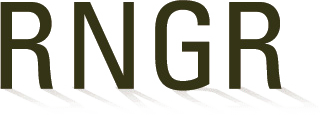
Agrostis (scabra)
|
Mark E. Majerus USDA NRCS - Bridger Plant Materials Center 99 South River Road, Rte. 2, Box 1189 Bridger, Montana 59014-9718 (406) 662-3579 (406) 662-3428 (fax) mmajerus@mt.nrcs.usda.gov http://plant-materials.nrcs.usda.gov/mtpmc |
|
| Family Scientific Name: | Poaceae | ||
|---|---|---|---|
| Family Common Name: | Grass | ||
| Scientific Name: | Agrostis scabra | ||
| Common Name: | Rough bentgrass | ||
| Species Code: | AGSC5 | ||
| Ecotype: | See | ||
| General Distribution: | Open parks that are wet in spring and early summer and dry out as growing season progresses; Newfoundland and Alaska, south to all but southeastern US. | ||
| Propagation Goal: | seeds | ||
| Propagation Method: | seed | ||
| ProductType: | Propagules (seeds, cuttings, poles, etc.) | ||
| Time To Grow: | 0 | ||
| Target Specifications: | Harvest yields vary due to weather and age of stand. Average annual production is 142 kg/ha (127 lbs/ac). | ||
| Propagule Collection: |
Wildland collection occurs mid August to early September when caryopsis are tan-brown, at the hard dough stage, and not yet shattering (natural dispersal) from the open panicle; easily hand-harvested. One collection hour/person will yield an average 77 grams (2.7 oz.) clean seed (ranged 23 to 168 grams and varies by year, stand density, and collector experience). |
||
| Propagule Processing: |
Seed Processing: Seed is spread out on a tarp in a dry, sheltered environment and turned daily for approximately 3-5 days, until no moisture or warmth is detected. After drying, material is processed with a Wintersteiger plot combine at concave closed, speed 700 rpm, and no wind. Seed is threshed with a hammermill through a 4/64' round hole screen, and air-screen processed on a Clipper M2B or Eclipse cleaner over a 1-24" round hole screen. Due to tiny seed, presence of fluff and other seed debris, and poor seed flow, this species is modeerately difficult to clean. Larger seed lots are processed most efficiently with mechanized cleaning equipment and smaller seed lots usually require more hand labor. Germination: 98%. Seeds/Kg: 9,500,000. Purity: 100%. |
||
| Pre-Planting Treatments: | Seed Treatments: Seeds placed in 0-1§C (32-34§F) for 10-day cold stratification treatment and then exposed to 22-25§C (72-77§F). | ||
| Growing Area Preparation/ Annual Practices for Perennial Crops: |
Propagation Environment: Seedbed is firm and free of weeds with good field moisture to 4" depth. Seed Propagation Method: Direct seeding. |
||
| Establishment Phase: |
Sowing Date: Spring or fall. Sowing/Planting Technique: 25-30 pure live seed/ft. (0.3 m) row, irrigated 91cm (36 in) row spacing, seeded with 2-row double-disk planter with depth bands, optimum seeding depth 0.6 cm (0.25 in). Establishment Phase:). Soil surface is kept moist throughout the 14-16 day germination and emergence period (also helpsprevent soil crusting); lower rates of Buctryl or romoxynil are applied at 3-5 leaf stage to control broadleaf weeds. Fertilizer application is not recommended the first year, as it generally stimulates weed growth and competition. |
||
| Length of Establishment Phase: | 2 growing seasons. | ||
| Active Growth Phase: | Rapid Growth Phase: Spring to fall; broadleaf weed control with herbicides must occur prior to boot stage; soil moisture is critical during boot stage, milk stage of seed development, and post harvest to pre-freezeup - no irrigation is applied during flowering (pollination); fertilizer is broadcast at 100 lbs actual N/40 lbs actual P/acre in mid-September. | ||
| Length of Active Growth Phase: | 2 to 3 growing seasons. | ||
| Hardening Phase: | N/A. | ||
| Harvesting, Storage and Shipping: |
Harvest Date: Cultivated harvest occurs late July to late August, with a mean harvest date of August 3 at the Bridger Plant Materials Center. A John Deer swather is used to cut stems into windrows for direct combining, or, to minimize seed loss, a temporary "diaper"- a heavy piece of plastic or canvas clipped under belt draper - is attached for direct catchment. Seed Storage: Seed is placed in plastic seed bags and stored in a cool, dry environment. Seed dormancy: Seed dormancy is classified as physiological dormancy. |
||
| Length of Storage: | <b>Storage Duration:</b> 5 to 7 years. | ||
| Other Comments: | Ecotype: 3 different Yosemite National Park accessions periodically collected and produced from 1988 to 2000. Grassland and forest ecological zones include tufted hairgrass/sedge and lodgepole pine habitats. Elevation range 2,198 m to 2,256 m (7,212 ft to 7,400 ft). | ||
| References: |
Manual of the Grasses of the United States, A. S. Hitchcock, Second Edition, Two Volumes, Dover Publications, Inc., 1970. Flora of the Pacific Northwest, C. L. Hitchcock and A. Cronquist, University of Washington Press, 1973. Montana Interagency Plant Materials Handbook, Montana State University, Extension Service Bulletin EB 69, June 1990. Yellowstone Vegetation - Consequences of Environment and History in a Natural Setting, Don G. Despain, Roberts Rinehart Publishers, 1990. Seeds: Ecology, Biogeography, and Evolution of Dormancy and Germination, C. C. Baskin and J. M. Baskin, Academic Press, 2001. |
||
Citation:
Winslow, Susan R.. 2002. Propagation protocol for production of Propagules (seeds, cuttings, poles, etc.) Agrostis scabra seeds USDA NRCS - Bridger Plant Materials Center Bridger, Montana. In: Native Plant Network. URL: https://NativePlantNetwork.org (accessed 2025/11/03). US Department of Agriculture, Forest Service, National Center for Reforestation, Nurseries, and Genetic Resources.



